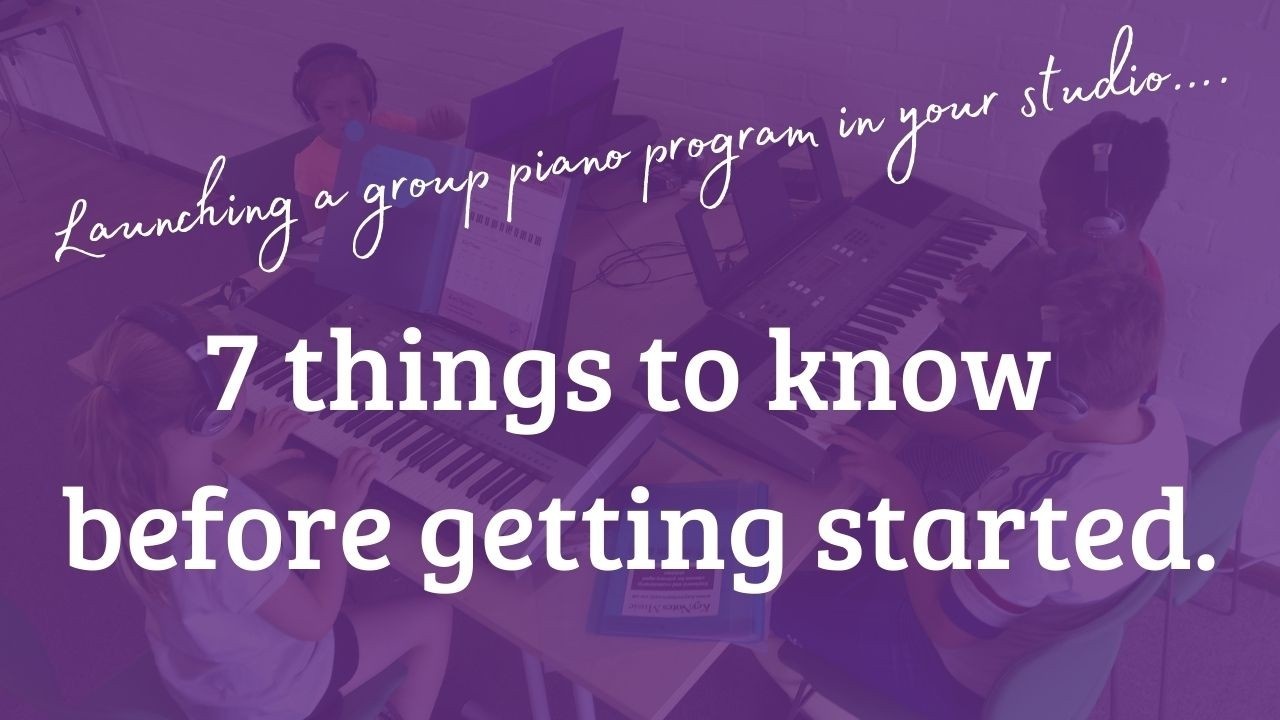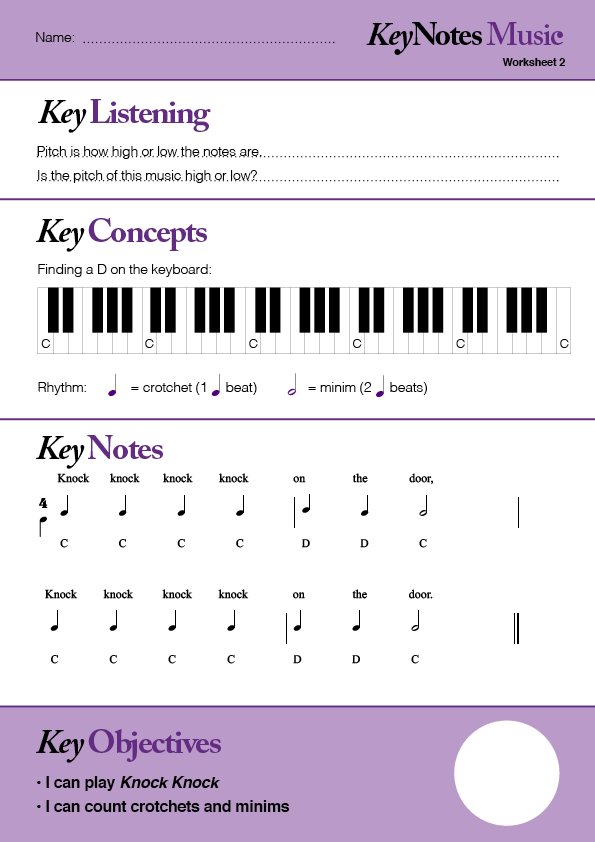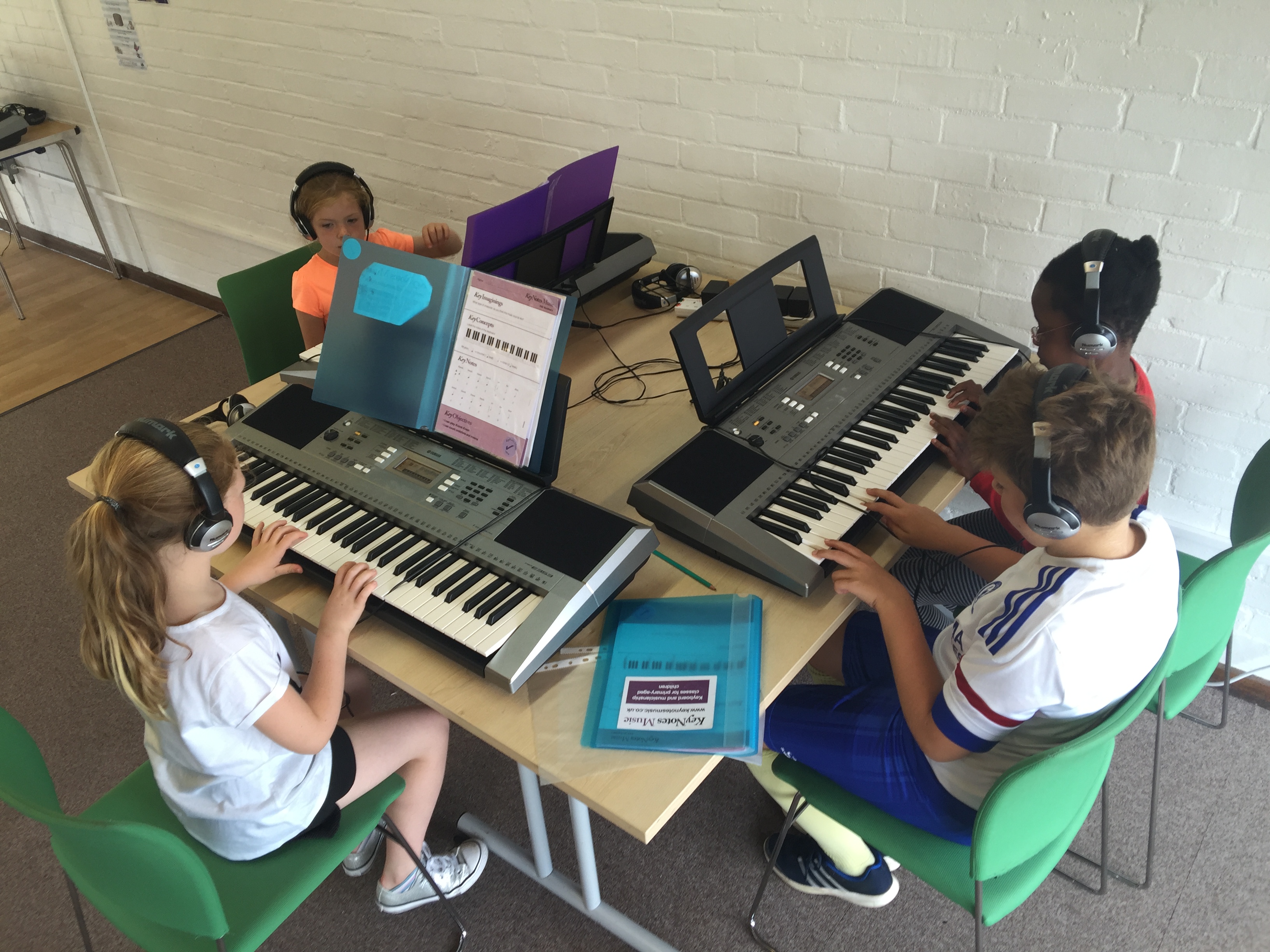Launching a group piano program in your studio…. 7 things to know before getting started.
Apr 29, 2021
On Friday 30th April (2021), it will be 5 whole years since I taught my first ever group piano class. I remember so clearly, both the excitement and the concerns, and after five years, only the excitement remains! I would love to share with you what those concerns were all those years ago, just in case some of you have the same concerns.
Maybe this will help!
Why did I start teaching group piano?
Before I go into how I started, I thought it would be a good idea to tell you why I started! You may be able to relate to some of these reasons.
First of all were the practical reasons. I was mum to a 6-year old, a 4-year old and a 1 year-old and had long stopped my full-time Head of Music role in a secondary school. I wanted to continue teaching (in addition to my one day a week I was still doing in school), yet be able to look after my kids during the week. So I thought about working on Saturday, so that my husband could look after the kids.
At around the same time, my own children had begun learning instruments, younger than many teachers will accept them. Their friends’ parents started asking me about this, except they didn’t want the commitment of one-to-one lessons; instead wondering if there was anything that follows on from an early years general music program (a lot of them had attended and loved Monkey Music, which is very popular in the UK).
So with these two factors together, I decided to begin my classes. I am one of those people who is happy to just go for it, without all the details perfectly in place, but there are certain things I definitely needed to get sorted before the big launch!
4 Steps to Launch
1. The Teaching Space
The first thing I needed to consider was where to teach my classes. I knew I wanted to use keyboards of the same spec that I use in my high school classroom, but I needed space to set them up.
Since I knew I would only be needing to hire for a couple of hours on Saturdays, I wanted to find somewhere that would hire by the hour. I also wanted it to be in a good location with family footfall. Lots of the church halls were already booked up, so I asked in my local library. They had a room upstairs so that noise wouldn’t be an issue!
2. The Keyboards
I bought four keyboards as I wanted to launch with four students in each class. I went with 61 touch-sensitive keys; my favourite has always been the Yamaha NP-12 which is part of the piaggero series. The sound quality is good and there are fewer distracting buttons! I also purchased two sets of headphones per keyboard (so that I could listen to each student as they practiced without needing them to play out loud, thereby distracting the others in the class).
3. The Curriculum
Although I had many years of teaching groups of children on keyboards, I had never taught anyone below the age of 11. I wanted to use materials that would be suited to the ages I was starting with (age 6+) both in terms of the imagery and look of the worksheets, and in terms of the content that they could actually access. I was extremely lucky to have a husband who owns a branding agency and whose designers could help me with the layout of my worksheets. However I only wanted to plan week to week so that I could see what worked with these age groups, and what didn’t, and adjust my planning accordingly! (Anyone who has planned week to week before, it is exhausting right?!).
The first workbook that I designed over that first term is still used as the first workbook in the Storytellers program which is one part of the KeyNotes program, by teachers all over the world: Goldilocks and the Three Bears.
This is one of our very first worksheets:

Here is the same lesson in our current Goldilocks workbook:

4. Getting a class together
I had the space, the keyboards and the loose idea for a curriculum, now all I needed was some students! As mentioned above, I am married to the owner of a branding agency, so the name for my classes, the logo and the general branding came very quickly and easily! These are important aspects when trying to convince parents to sign up to something really quite novel!
Being in the library, I was able to put some flyers out, and I got a few email enquiries from that (and one for some help with how to use an iPad, but that story is for another day!). And remember those friends of my own kids, whose parents wanted them to take some music classes? A few of them signed up too!
This was our very first leaflet and actually once we moved location, we no longer used leaflets as a form of marketing, instead relying on word-of-mouth:

In other words it was fairly easy to get three classes of four together, and we set the launch date for 30th April, 2016!
My very first class:
3 Things I Noticed After Starting
1. Each individual accessed my classes so differently
From the very first class, I could see that different children were accessing the learning to varying degrees, some picking up things very quickly, some taking longer and needing more consolidation. Obviously I had experienced a way more extreme version of this in my school music classes (where some students were Grade 8 on their instrument and others had never even had a turn playing an instrument), but I don’t think I realised quite how wide the gap would be even if NO one had any experience on the piano and they were of similar ages.
With my experience in the classroom, I was able to give extensions on the fly, but I realised as soon as that first class was over, I was going to need to properly plan for differentiation and have a system. This system of challenges is what makes the KeyNotes program so unique. And it started from the very first day!
It was going to be very important for scheduling in those early days where I didn’t have lots of classes to move people to, so if they were doing well, I needed to provide further extensions for them, to be keep them moving at a suitable rate for them.
2. Free trials are a no-go
I don’t think I learnt this on my very first day, but I certainly learnt it in the first weeks and months. When we are limiting the numbers of children in our classes, we absolutely cannot risk a no-show, and when you are offering free trials, there are inevitably quite a few no-shows. As soon as I set up my sign-up widget from My Music Staff (which I didn’t discover until a good while in!) I was able to set three-week paid trials and the first I heard from a new parent was their payment for a trial. I therefore knew they were going to show!
3. Have a notice period requirement in place
Fast forwarding to my second term of teaching my groups, I turned up to my classes, after a long Summer holiday, and in a couple of my classes, at least one person just didn’t turn up. When I emailed the parents to ask (even though I had sent them term dates and invoices before the class started), they said that they could no longer make the class. So I found myself running at half full in some classes. I was able to jig things around BUT I learnt that I needed to make sure parents give me half a term’s notice so that when I set the classes for the following term, I would actually know who I had in each class! Nowadays I have a waiting list and such a buzz around my lessons that it is rare for people to leave!
Timeline Over 5 Years
- 30th April 2016 – First group classes launched – initially “Storytellers” classes for age 6+ (which didn’t have a name back then!)
- May 2016 – Group classes launched in a local primary school as an after-school club (which I taught)
- September 2016 – First pre-school group class launched for ages 4-5: “Little KeyNotes”
- January 2017 – First teacher employed to teach an after-school club in Epsom
- September 2017 – Second teacher employed to teach KeyNotes Music classes in Balham, London. I launched more classes in Cobham, Surrey on Saturday mornings
- January 2018 – More teaches employed to teach in Twickenham, Dorking, Ealing and Greenwich
- September 2018 – Two teachers launch their own KeyNotes programs as independent businesses
- January 2019 – Course for teachers wanting to start groups, launched
- July 2019 – Founders invited to offer KeyNotes Music in their own studios
- March 2020 – Program adapted for online teaching/learning
It is hard to believe that, what started as my little classes in a library in Cheam, has become an international program, that teachers all over the world are using. I am so incredibly proud of what KeyNotes has become, how it develops our learners, indeed how it develops our teachers!
Whether you have a young family, and your teaching time needs to be short and precious, but impactful, or whether you realise that your beginners would thrive in groups, feeding into your private program with all-around musicians who practice and LOVE learning, KeyNotes Music can offer you a framework not only for classes that work, but for marketing, admin support and training.
Find out more about offering our program here:
Want to learn more about the
KeyNotes Music program?
Download our teacher information brochure to discover what our license includes, which programs we offer and what our approaches to learning are:
We will send you emails from KeyNotes Music, unsubscribe at any time.


